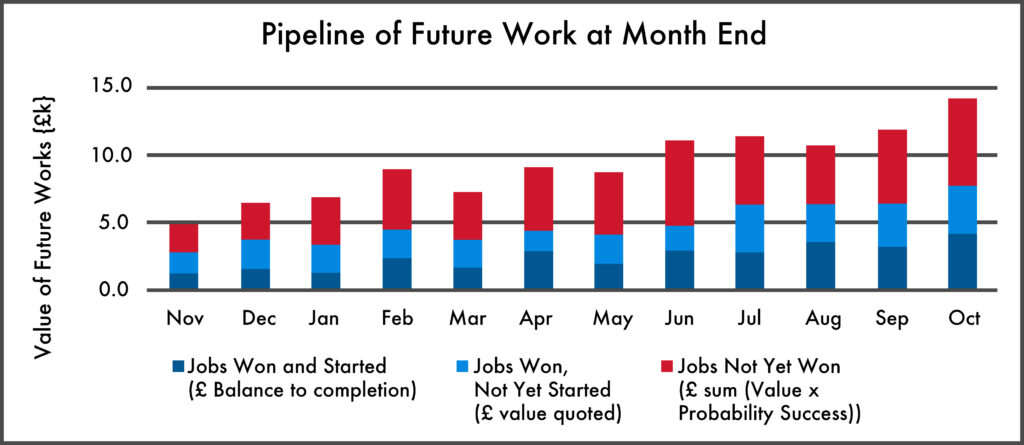To accurately assess your company’s performance, you must analyse the right data to provide an insight into the economic health of your business; it also allows you to identify how well your team are performing. If you implement a new strategy or launch a new product/service, analysing the data from before and after the change will allow you to conclude how the change has impacted performance. If it worked, then you know to do more of it. Alternatively, if you try something that isn’t as successful, you can decide to do less of it before you invest more time, money or resources into it.
We speak to many business owners who measure their performance using historical or lag measures. We’ll explore what these are and why they’re important and discuss what you need to measure to allow you to indicate future performance (which is essential throughout challenging times!).
What are lag measures?
Lag measures (sometimes referred to as historical measures) measure your business’ past performance and there isn’t anything you can do to change them.
Examples of financial lag measures are:
- Revenue
- Gross profit
- Overheads
Additionally, there are generic lag measures, which include:
- How efficient are your operations performing? (Are they on time, delivering in full and to the agreed specification?).
- Client/customer feedback.
- How quickly clients/customers pay.
- Frequency of purchases and what products/services your clients/customer buy from you (knowing this information allows you to complete a Magic Matrix to see what cross-selling/upselling opportunities there are!).
Every organisation has their own critical lag measures. If you’d like help identifying your specific lag measures to analyse them, do get in touch with Bill.
Whilst it’s crucial to frequently analyse your lag measures to reflect on historical performance, you must also measure indicators of future success…
The indicators of future success you must measure and why
In challenging times, you must measure the following as they will help indicate how your business will perform in the months ahead. These indicators can provide you with more certainty and confidence in making decisions and, similarly, can provide you ‘an early’ warning sign which is especially important in the current climate.
Number of leads
Knowing how many new leads you get each month can give you an insight into your future performance. If it’s a higher number than usual, you may be able to identify what new strategy has led to this increase. It can also help with resource planning by allowing you to determine if you need to hire new staff (either temporary or permanent) to ensure you continue delivering the same high-quality products/service.
What channels your leads come from
When you measure what channels your leads come from, you identify which methods are working versus which aren’t. Bill always encourages you to invest more into what you know works rather than investing in strategies when you are unsure of their rate of success.
Client acquisition cost for each channel
When analysing which channels produce the most leads, go one step further and figure out the client acquisition cost for each channel. This will allow you to identify the channels that produce the most lucrative leads so you can capitalise on them.
Conversion rate per channel
It’s important to analyse the return on investment of your sales and marketing efforts by actively measuring your conversion rate per channel. Compare your conversion rate per channel to your client acquisition cost per channel to identify your strongest and most cost-effective lead generation and conversion methods.
How much work you have in your pipeline
Finally, knowing how much work you have booked in, work you’re currently doing (but haven’t invoiced for yet) and how many retainer clients/customers you have will give you your pipeline value. Working out your pipeline value will help you better manage your resources and make more informed decisions. It can also help draw further conclusions about what in your sales strategy is working and what isn’t.

Would you like help drawing conclusions from your data?
If you’re having difficulty collecting your data and you would like a template document showing you what generic indicators for lag measures and future success you need to be measuring and how to format your data, get in touch, and we’ll send it to you! On the other hand, if you have successfully collected your data, but you’re struggling to draw conclusions from it, Bill can support you and help to draw meaningful conclusions into an implementable strategy.
Or book a call with Bill if you’ve analysed your data and need an honest friend to help you navigate challenging times. He has helped many business owners like you improve their strategy to get more leads and thrive.




